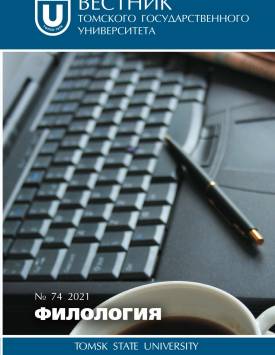Regional Identification of Russians in Media Discourse: Sameness and Difference
The article explores the practices of regional identification of Russians in media discourse. The material includes the texts of the print media of Kaliningrad and Sverdlovsk Oblasts and the Republic of Tatarstan in 2017-2019. Identity is considered as a discursive phenomenon, which is an aggregate of identifications of subjects of discourse. The authors propose a new methodology for the analysis of territorial identity, involving the construction of its model, the key elements of which are spatial and temporal identifications. The main identification practices that construct the unique space of a region are: nomination of the region and the regional center through periphrases; the use of local toponyms without generic words and other explanations; construction of significant neighbors. Analyzing temporal identification, the authors identify the features of discursive constructs of the past, present, and future of the regions under consideration. A unique historical narrative plays a special role: in Kaliningrad Oblast, it relates to the Prussian past; in Sverdlovsk Oblast, to the formation of the industrial potential; in Tatarstan, to the opposition of Russian and Tatar statehood. The future is constructed as “predicted time”, associated with the implementation of large-scale projects, the selection of which demonstrates the identity of the regions. The present in media discourse is an extremely complex construct, which is considered as a set of thematic identifications. As an example, the authors show that political identification involves the selection and construction of images of regional politicians, economic identification is determined by the sector of the economy that is significant for the territory. Also, the authors describe main identification practices that ensure the integration of regions into the all-Russian space. These include the use of secondary nominations that fix the special position of the territory on the map of Russia, and comparison of the regional center with Moscow. The authors show that temporal unity is ensured, firstly, through a historical narrative telling about the inclusion of territories in the allRussian historical process. The construct of the future in regional media discourse is often associated with the implementation of projects of an all-Russian scale, for example, with the World Cup. The practices of constructing the present related to the economic and political spheres are considered. Economic identification demonstrates the inclusion of regions in the all-Russian budget process, political identification demonstrates the construction of officious ideological concepts and the power vertical, at the top of which is Russian President Vladimir Putin. The conclusion is that the practices of spatial and temporal identifications construct, on the one hand, the uniqueness of the Russian regions, and, on the other, their commonality, ensuring the unity of the national identity of Russians.
Keywords
discourse, media discourse, discursive practice, media, identity, identification, regional identityAuthors
| Name | Organization | |
| Kablukov Evgenii V. | Ural Federal University | kablukov.usu@gmail.com |
| Ilina Olga V. | Ural Federal University | ilina.usu@gmail.com |
References

Regional Identification of Russians in Media Discourse: Sameness and Difference | Vestnik Tomskogo gosudarstvennogo universiteta. Filologiya – Tomsk State University Journal of Philology. 2021. № 74. DOI: 10.17223/19986645/74/6
